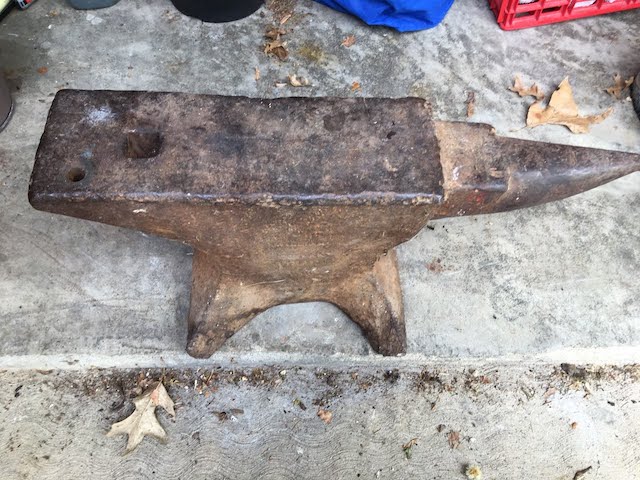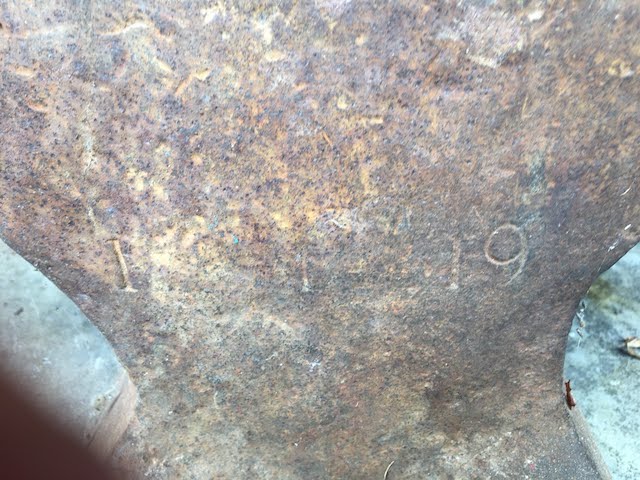
Two weeks ago, I had a father and son in the Beginners Class. After going through the equipment briefing, we got to talking about old anvils.
Matt, the dad, started describing an anvil they had at home. It had been in the family for quite a while.
He said it had some markings on the side that you could barely make out.
I asked him to text me some photos when he got the chance.
Old Historic Anvils and the English Hundredweight System
A couple days after the class, Matt texted some photos over.
He also told me that he dated the anvil back to 1833 and figured out the manufacturer: William Foster.
One of the photos he sent of the William Foster showed some faint markings:

It’s hard to read, but it says: “1 1 19”
It would be amazing if we could read those as the weight of this anvil. Sadly, it doesn’t weigh 1,119 pounds.
The 1 1 19 is part of a system developed long ago called the English Hundredweight System.
The first 1 is a single hundredweight or 112 lbs.
The second 1 is a quarter hundredweight or 28 lbs.
The 19 is simply the pounds left over.
To get the total weight, you add the numbers together:
112 + 28 + 19 = 159 lbs.
That’s a decent sized anvil.
Here’s a handy calculator at AnvilFire.com for calculating hundredweight.

Old Anvils are Pieces of History
If you live a long time, you’re bound to show some signs of wear and tear. The same is true for anvils.
This anvil was made in 1833. That’s creeping up on 200 years!
In 1833:
- Andrew Jackson was sworn in for a second term as president.
- 350 settlers established the “city” of Chicago.
- Oberlin College was founded.
A big Thank You to Matt and Luke for Coming out the Forge and sharing this piece of history!
